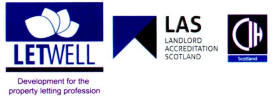Just like a friend you haven’t seen for a long time, your rental property will look older when you get it back at the end of a tenancy, and the difference can be jarring if you haven’t visited for a while.
Regardless of whether they’re owned or rented, all homes age, but when you see yours all the time, it’s easy to miss and live with the gradual wear and tear that’s part of daily life.
While most tenants return their property in an excellent state, some are less considerate, and accidents also happen, so it’s a smart move to arm yourself with answers to questions like:
- What counts as damage?
- What is considered fair wear & tear?
- How can you minimise the risk of damage?
- What do you need for a valid claim?
- How does the claims process work?
It’s all covered in this week’s blog so you can boost your knowledge, protect your property and make a successful claim in the event of a dispute.
WHAT COUNTS AS DAMAGE?
If we were to sum up what counts as damage in one sentence, it would be: “deliberate or accidental negligence towards your property by your tenant or their visitors.”
Although we can’t cover every possible eventuality in this article, here are some pointers on what would usually count as damage (assuming they’re covered in the tenancy agreement).
- Causing appliances to break down through lack of care (this can include not defrosting a freezer, failing to descale washing machines, and not cleaning cooker hoods or extractor fans).
- Burn marks on worktops, floor coverings and furniture from irons, saucepans, hair tongs and cigarettes. If your property is no-smoking, then tobacco smells and discolouring also count.
- Mould from drying clothes on radiators, leaving bottles against tiles in wet areas, and not ventilating during and after showers and cooking.
Tenants are never responsible for damage by neighbouring homes, extreme weather, intruders, vandals or landlord negligence, so it’s wise to protect yourself with adequate insurance.
WHAT COUNTS AS WEAR & TEAR?
Even with the most wonderful tenant’s best intentions, it’s impossible to return a property in exactly the same condition as it was at check-in, particularly if a tenancy lasts for years.
Of course, this does leave room for grey areas, but here are some typical examples of wear and tear for landlords to accept as part of daily life.
- Scuff marks on walls (particularly entrance halls, stairs and landings), loosening door handles, and minor chips, dents or scratches on worktops and cupboards.
- Carpets tend to deteriorate faster than solid floors from being walked on and pulling away from thresholds, while cheap laminate flooring is notoriously prone to chipping.
- Without providing adequate ventilation in kitchens and bathrooms, you can expect mould to grow on grouting, sealant and ceilings, along with flaking paintwork.
Finally, cleaning is an entirely separate subject to wear and tear, and tenants should always return your property as clean as they received it (assuming the tenancy agreement says so).
HOW CAN YOU MINIMISE THE RISK OF DAMAGE?
The happiest landlords are those who have the least hassle from either regular maintenance calls about things breaking down, or dealing with damages after tenants move out.
So it’s wise to take a few precautionary measures before a tenancy starts, and you can make your property a more durable place to live when you:
- Use decent fittings – cheap taps, blinds, carpets, door handles, locks and appliances will always malfunction or break (even if you won a case, you’ll still spend dreary time sorting it out)
- Avoid delicate fittings and finishes like glossy lacquered radiators and taps, cheap laminate flooring and any high-maintenance surfaces.
- Make it easy for your tenants to look after your property and keep their deposit by educating them in reducing mould, caring for appliances, removing shoes at the door, etc.
- Carry out regular inspections so you can catch potential problems early, alert your tenants to where they’re making mistakes, and make minor repairs before they become major issues.
- Take out insurance – this will cover you for any costs that either exceed the security deposit or are not the responsibility of the tenant (i.e. weather damage, break-ins, theft)
Remember: tenants are liable for damages and breakages, whether accidental or deliberate, but if you supply fittings that aren’t quite up to the job, the cost of repairs will all be yours.
WHAT YOU NEED FOR A VALID CLAIM
To make a successful claim against your tenants for damages, you need to meet specific criteria to show that you’ve suffered a loss and have the right to reimbursement, including:
- An inventory signed by the tenant (on every page) at the start of the tenancy with accompanying photographs or videos, along with signed reports from your regular inspections.
- Proof that the damage was caused by your tenant or someone they were responsible for, like friends, delivery people and pets.
- A tenancy agreement that covers the type of loss you’re trying to recoup and allows you to take it from the security deposit (here’s where many off-the-shelf contracts fall short).
- Evidence that allows the loss to be worked out in monetary terms (i.e. initial receipts, current price for an equivalent replacement, and estimates for any labour).
Bear in mind that your claim can be rejected if you request an amount that benefits you more than if the damage had never happened – tenants are only liable for what they broke; not for the cost of upgrades.
HOW DOES THE DAMAGE CLAIMS PROCESS WORK?
Before you start a claim, remember that recovering costs is not about blaming or shaming, and how you communicate with your tenants can be the difference between a swift resolution and a lengthy conflict.
However, if you can’t resolve things amicably after 30 days of the tenancy ending, these are the steps to making a claim.
- Ask the deposit protection provider to appoint an independent adjudicator. The onus is always on the landlord to prove a loss, so provide as much evidence as you can.
- The adjudicator will review the evidence, liaise with your tenant, and usually give a decision within a month. This is final and legally binding and can only be challenged in court.
- If you wish to take things further, you can claim up to £5,000 in the small claims court if your property is in England and Wales, or use the Simple Procedure in Scotland.
- Higher amounts are claimed through the county court in England and Wales, or the Civil Court (Sherrifs Court) in Scotland, but you’ll need a solicitor.
Remember: the tenant’s deposit remains their money until an agreement or judgment is made, and it’s illegal to hold on to any more than the amount of your claim.
Are you protected against damages by your tenant?
If you own a rental home and you’d like a simple check that your tenancy agreement covers you properly, we’re here to help.
Whatever you’d like to know, call Richard Cook on 0790 909 3141 or email him at richard.cook@fifeproperties.co.uk for a friendly and expert chat.


